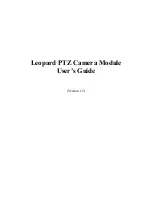
432-0003-00-10 rev 140 M-Series Operator’s Manual
45
Troubleshooting Tips
Noisy image
A noisy image is usually attributed to a cable problem (too long or inferior
quality) or the cable is picking up electromagnetic interference (EMI) from
another device. Although coax cable has built-in losses, the longer the cable
is (or the smaller the wire gauge/thickness), the more severe the losses
become; and the higher the signal frequency, the more pronounced the
losses. Unfortunately this is one of the most common and unnecessary
problems that plagues video systems in general.
Cable characteristics are determined by a number of factors (core material,
dielectric material and shield construction, among others) and must be
carefully matched to the specific application. Moreover, the transmission
characteristics of the cable will be influenced by the physical environment
through which the cable is run and the method of installation. Use only high
quality cable and ensure the cable is suitable to the marine environment.
Check cable connector terminations. Inferior quality connections may use
multiple adapters which can cause unacceptable noise. Use the FLIR Video
Distribution Amp when splitting the signal to multiple monitors.
Image too dark or too light
By default the M-Series thermal camera uses an Automatic Gain Control
(AGC) setting that has proven to be superior for most applications, but a
particular environment may benefit from a different AGC setting. For exam-
ple, a very cold background (such as the sky) could cause the camera to use
a wider temperature range than appropriate. The user should keep the
ocean, and not the sky or the boat, as the predominant object in the image.
Refer to the Video Setup Menu section for information about how to make
adjustments to the image with the SCENE button.
Performance varies with time of day
You may observe differences in the way the camera performs at different
times of the day, due to the diurnal cycle of the sun. Recall that the camera
produces an image based on temperature differences.
At certain times of the day, such as just before dawn, the objects in the
image scene may all be roughly the same temperature, compared to other
times of the day. Compare this to imagery right after sunset, when objects
in the image may be radiating heat energy that has been absorbed during
the day due to solar loading. Greater temperature differences in the scene
generally will allow the camera to produce high-contrast imagery.
Performance may also be affected when objects in the scene are wet rather
than dry, such as on a foggy day or in the early morning when everything
may be coated with dew. Under these conditions, it may be difficult for the
Summary of Contents for M-Series
Page 1: ...M Series 432 0003 00 10 Revision 140 January 2011 Operator s Manual ...
Page 4: ...432 0003 00 10 rev 140 M Series Operator s Manual 6 Custom Network Applications 61 ...
Page 6: ...8 432 0003 00 10 rev 140 M Series Operator s Manual ...
Page 61: ...432 0003 00 10 rev 140 M Series Operator s Manual 63 ...
Page 62: ...64 432 0003 00 10 rev 140 M Series Operator s Manual ...
Page 63: ...NOTES 432 0003 00 10 rev 140 M Series Operator s Manual 65 ...
















































